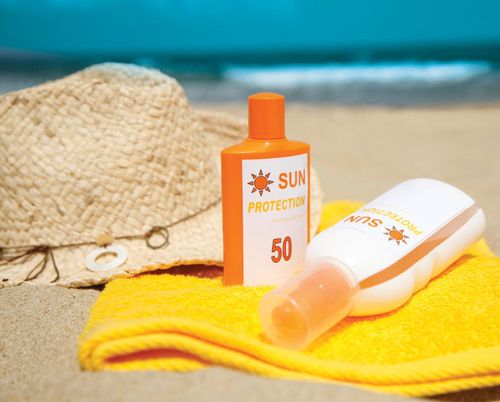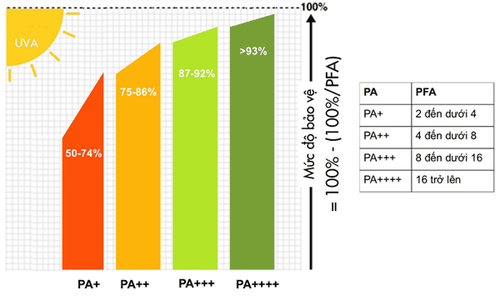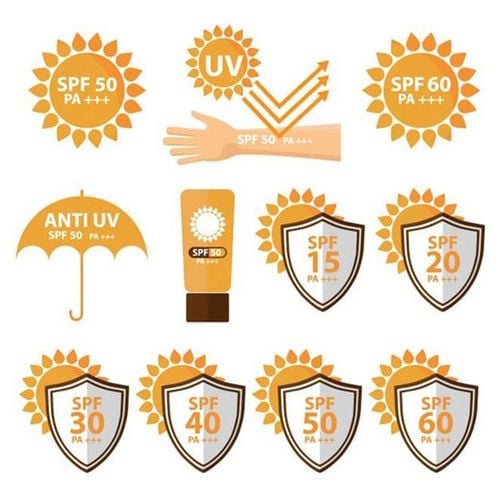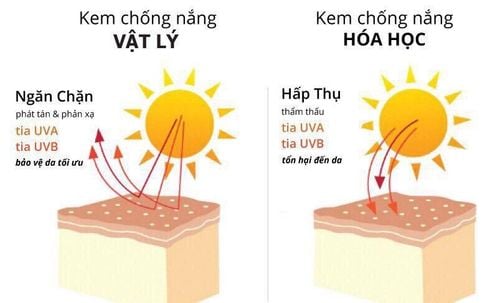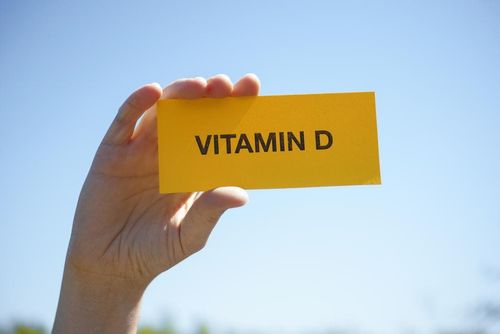This is an automatically translated article.
The article was professionally consulted by Specialist Doctor I Le Thi Thu Hang - Dermatologist - Department of Medical Examination & Internal Medicine, Vinmec Hai Phong International General HospitalVietnam is a tropical country, with a lot of sunlight and strong intensity, the higher the sunlight intensity, the higher the UV intensity. So what is UV light, how much UV is harmful?
1. What are UV rays?
UV rays (Ultraviolet) also known as ultraviolet rays, ultraviolet rays are electromagnetic waves with wavelengths shorter than the wavelength of visible light but longer than the wavelength of X-rays. The spectrum of ultraviolet rays can be divided into two categories. into two regions: the near-ultraviolet region (with wavelengths from 380 to 200 nm) and the ultraviolet region, also known as the vacuum ultraviolet region (with wavelengths from 200 to 10 nm).When considering the effects of UV rays on human health and the environment, ultraviolet rays are divided into 3 types: UVA rays (wavelength from 380 - 315nm) also known as long waves or black light, UVB rays (wavelength 315 - 280 nm) are also known as medium waves, UVC rays (wavelengths shorter than 280 nm) are also known as short waves or sterilized waves.
2. Where are UV rays?
The term ultraviolet in ultraviolet means above of purple. Purple is the color with the shortest wavelength that our naked eye can see. Because it is beyond the wavelength of purple, UV rays are invisible to the human eye. Some animals such as birds, reptiles, insects (bees...) can see ultraviolet rays. Some fruits, berries and seeds become more colorful in the UV environment than they are in light normally seen by the human eye, to attract insects and birds. Some birds also have special shapes on their plumage that can only be seen under ultraviolet light, not visible to humans. The urine of some animals is also visible only with ultraviolet light.The sun gives off all 3 types of ultraviolet rays: UVA, UVB and UVC, having sunlight means ultraviolet rays. However, theoretically, because of the absorption of the ozone layer, 99% of the ultraviolet rays reaching the earth's surface are in the form of UVA rays, while the ozone layer itself is produced by chemical reactions with the participation of UVC rays, UVC is absorbed by the ozone layer. However, the ozone layer depletion is now at an alarming rate, causing UVB and UVC rays to become denser in sunlight.
Glass types depending on quality, usually transparent to UVA rays (UVA passes through glass) but opaque to shorter wavelengths (UVB, UVC do not penetrate glass). Silicon or quartz depending on the quality can be transparent to even UVC rays.
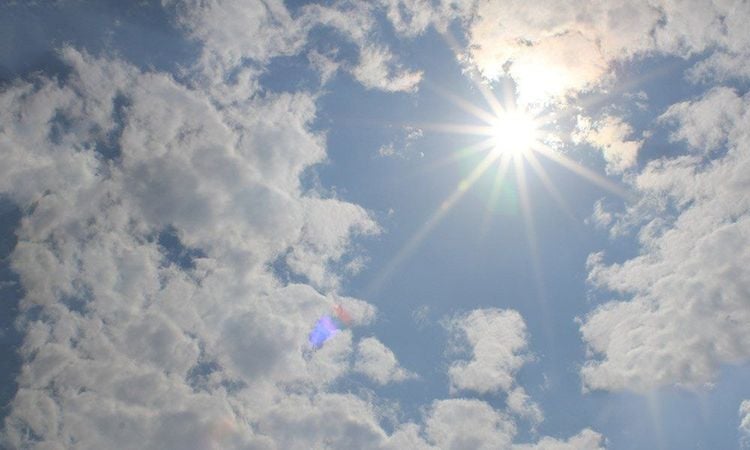
Geographical location: the intensity of UV rays is usually great in tropical areas, especially areas near the equator, areas farther away Equatorial location, the risk will be less. Altitude above sea level: UV intensity is usually proportional to altitude above sea level. Time of day: UV radiation is usually highly concentrated at noon, when the sun is high and shining directly, almost perpendicular to the ground (sun overhead, standing shadow), usually around from 10 am to 14 pm. Scenery and environment: UV levels are often high in large spaces, especially in highly reflective surfaces such as snow and sand. In fact, the level of UV rays almost doubles when UV rays are reflected from the surface of the snow. In urban areas there is usually less UV light due to the concentration of tall buildings, shade and trees.
3. How much UV light is harmful?
UV rays with different energy levels will have different degrees of harm to human health and environment:
UVA rays (380 - 315nm): can penetrate clouds, air, cause aging skin chemistry. UVB rays (315 - 280nm): still have the ability to partially penetrate through ozone and the atmosphere, causing heatstroke, damage and darkening of the skin. UVC rays (280 - 100nm): UV rays have the highest energy, cause skin cancer but have been blocked by the ozone layer.
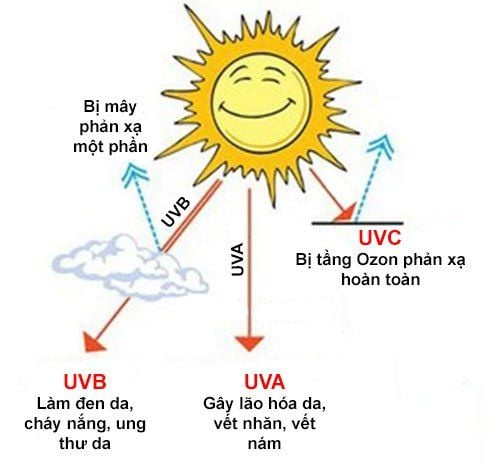
According to the Vietnam National Center for Hydro-Meteorological Forecasting, the highest temperature recorded in Hanoi on May 18 fluctuated between 37 - 39 degrees Celsius, in some places exceeding 39 degrees. The UK's World Weather Online website forecasts that the UV index in Hanoi on May 19 will reach 11. In the past, the southern provinces also experienced a fierce heat wave with average temperatures. ranges from 35 - 38 degrees Celsius, UV index at 12: extreme danger warning.
4 . What are the harmful effects of UV rays?
Because UVC is the radiation zone with the highest energy, UVC rays are likely to cause the most damage to human eyes and skin. Fortunately, the ozone layer of Earth's atmosphere blocks out almost all of these UVC rays. However, now due to many negative effects, the protective ozone layer of our earth is getting weaker and thinner, with many holes appearing, capable of allowing high-energy radiation such as UVC rays. This can reach the surface of the earth, easily leading to serious health problems.UVB ultraviolet radiation can pass through the ozone layer (although it is also partially filtered), currently UVB accounts for about 3% of all UV rays emitted by the sun and reaches the Earth's surface Soil. UVB rays stimulate the metabolism of Melanin - the skin pigment that makes the skin dark and tan. If the human skin is exposed to high-intensity UVB, it will cause sunburn, increasing the risk of skin cancer. UVB rays also cause skin discoloration, wrinkles, and other signs of premature aging. With our eyes, our corneas absorb most of the UVB radiation, so this is not the main cause of cataracts or macular degeneration, but mainly UVB rays cause corneal diseases such as keratitis, corneal conjunctiva, pterygium.
As for UVA rays, this is the ultraviolet radiation with the largest percentage (accounting for 97%) of the rays, because UVA easily penetrates the protective ozone layer of the earth. UVA rays can penetrate the cornea of the eye and enter the lens or retina on the inside of the eye. Prolonged exposure to UVA radiation can lead to cataracts or macular degeneration.
UV rays in general are also the cause of retinal burns due to not using dark glasses when viewing the eclipse, even though we do not feel the glare. Too much exposure to UV rays will cause damage and risk of skin cancer, especially for the Caucasian race, less melanin in the skin makes UV rays penetrate and cause more damage. UV rays cause breakage of the bonds between molecules, contribute to mutations in DNA and RNA structures in the cell nucleus, this is the main cause of cancers such as melanoma, basal cell carcinoma, tumor. squamous cells, sebaceous gland tumors... Thyroid and mammary glands are also affected by UV rays, however, they are still being studied on the extent of UV exposure of these glands.
Exposure to ultraviolet radiation also causes suppression of the immune system. Scientists believe that sunburn can change the distribution and function of white blood cells for up to 24 hours after sun exposure. If this condition is repeated for a long time, it will cause more harm to the human immune system.
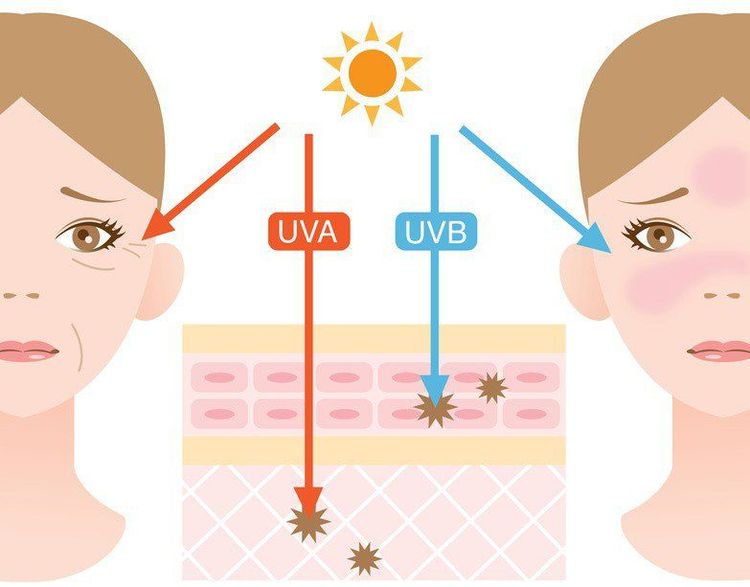
5. Benefits of UV rays
In another aspect, UV rays also bring huge benefits: helping the body synthesize vitamin D. Vitamin D helps the body use calcium and phosphorus, making bones and teeth strong. Although vitamin D can be obtained from foods such as: fish oils, eggs, milk, juices and cereals... but skin exposure to the sun is the best way to make vitamin D. Vitamin D. D comes in two forms: vitamin D2 and vitamin D3. D2 is found in plants and D3 is synthesized when the skin is exposed to ultraviolet (UV) light.UV rays are also used in the treatment of skin diseases such as psoriasis - a disease caused by skin cells growing too quickly, causing itching and scaling. UV exposure slows down the growth of skin cells, reducing symptoms.
Disinfection and sterilization: UV has very active applications in the field of sterilization and sterilization, ultraviolet rays can kill microorganisms such as viruses and bacteria, very useful when we dry cloth diapers, outdoor underwear and towels. UV rays penetrate the cell membranes of bacteria and viruses, destroy DNA, prevent their ability to regenerate and multiply, many places use UV germicidal lamps to disinfect.
Above is important information about UV rays, to better understand the harmful effects as well as how to protect your skin against the effects of UV rays, you can refer to the website of Vinmec International General Hospital for more information. .
Please dial HOTLINE for more information or register for an appointment HERE. Download MyVinmec app to make appointments faster and to manage your bookings easily.





